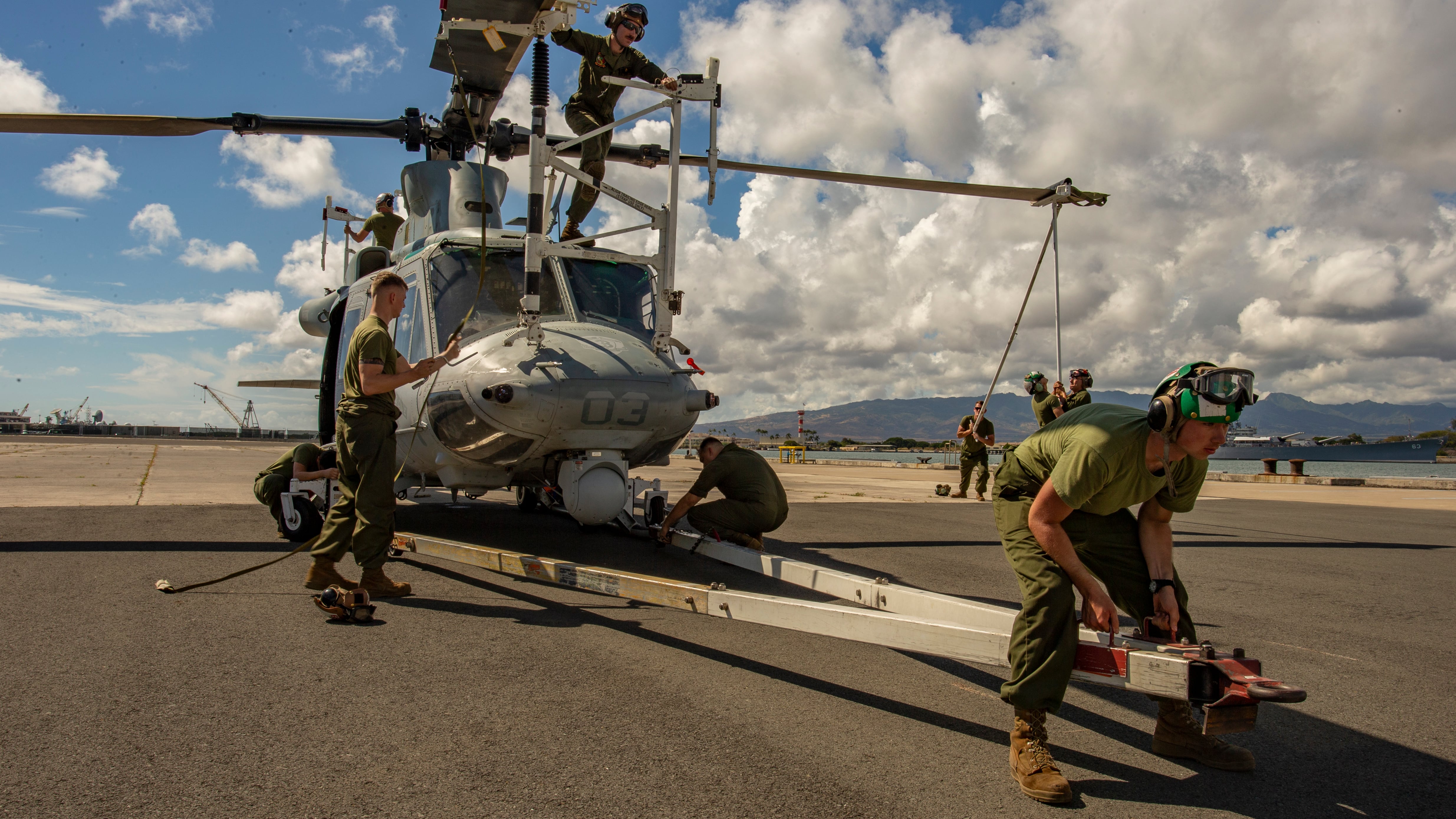Marine Corps aviation units are seeing as much or more change as the rest of the force while the service shifts its warfighting focus than any other. And more is in store.
In November 2021 the Corps reactivated an air wing support squadron after a 27-year hiatus, redesignating MWS Detachment 24 as Marine Wing Support Squadron 174 at Marine Corps Base Hawaii, according to a Marine statement.
The move adds more ground support to aviation squadrons that will be expected to carry their own weight at greater distances in more austere conditions should the Corps find itself in a fight with China.
RELATED

Officials expect the support squadron to be fully operational by 2023.
The reactivation followed the Corps moving its CH-53E squadron off of Hawaii and in March decommissioning shorter-range Light Attack Helicopter Squadron 367, home to AH-1Z Viper and UH-1Y Venom helicopters, also on Hawaii.
In 2020, the Marines deactivated light attack m medium tiltrotor and heavy helicopter squadrons at Camp Pendleton and Marine Corps Station Miramar, both in California as well as at Marine Corps Air Station New River, North Carolina.
While the rotary wing is seeing some shrinkage in certain areas, testing on the CH-53K King Stallion, a more heavy-duty version of the existing helicopter and increased numbers up of cargo transport plane crews and drone fleets down the pipeline will see a more long-range aviation fleet that aims to bring relevant airpower to a distance-driven Pacific fight.
This is an excerpt from “19 Things Marines Need To Know For 2022,” in the January print edition of Marine Corps Times.
Todd South has written about crime, courts, government and the military for multiple publications since 2004 and was named a 2014 Pulitzer finalist for a co-written project on witness intimidation. Todd is a Marine veteran of the Iraq War.




